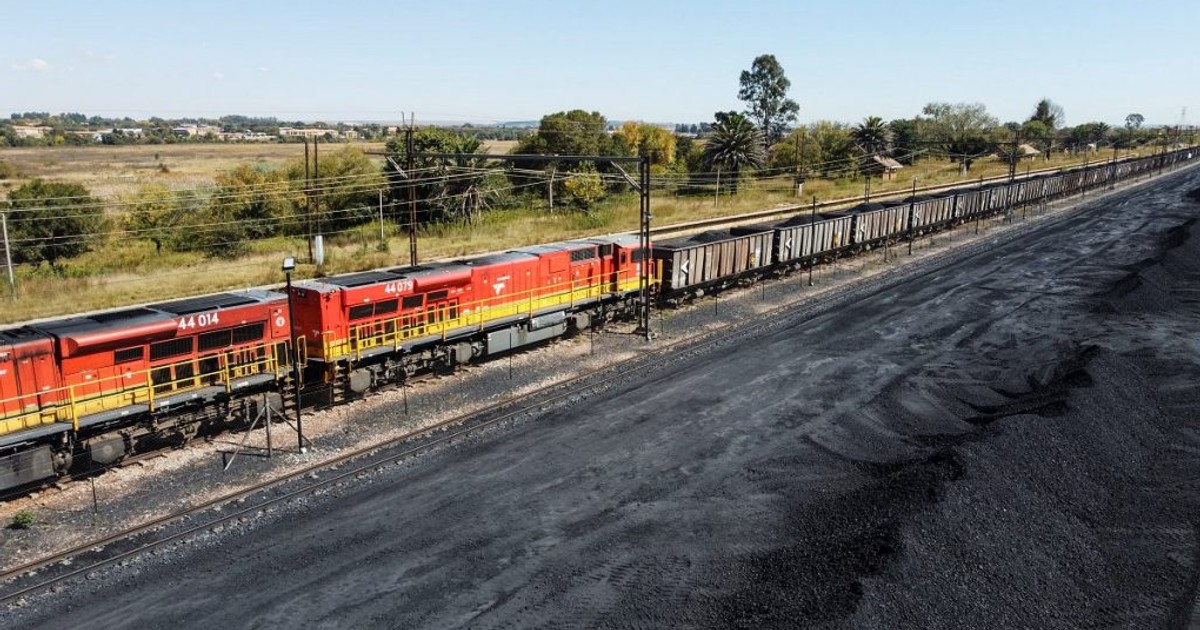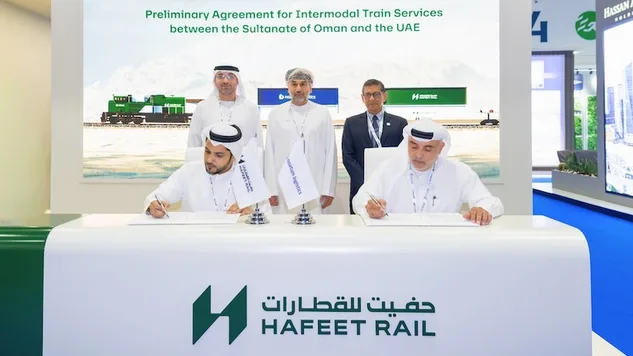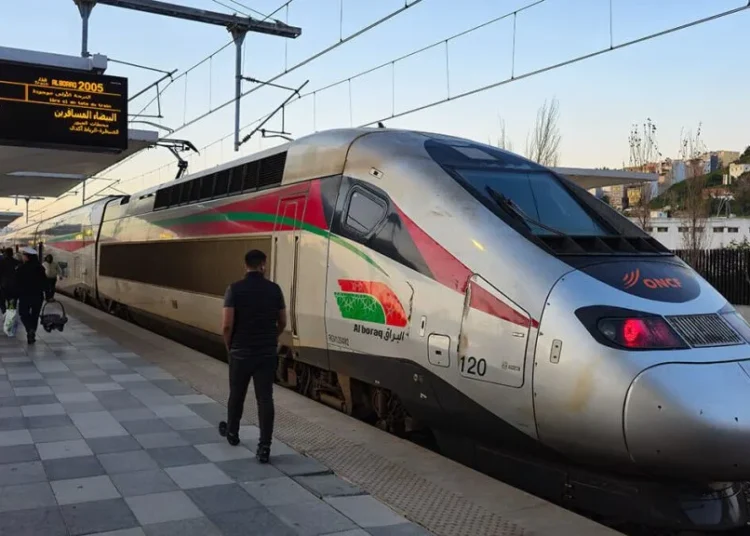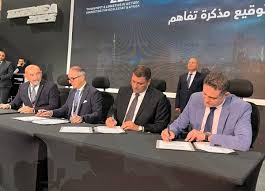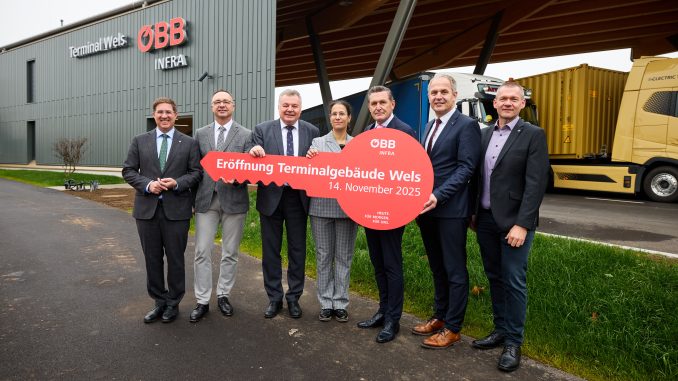Rail

How digital tools are powering the Middle East’s rail future

Partner content: Rail in the Middle East is entering a transformative phase. Ambitious new networks are being planned and built at record speed, while existing infrastructure is beginning to show signs of age. Governments are under pressure to expand mobility, support economic growth, and meet sustainability commitments, all while managing tight budgets and complex regional regulations.
At Global Rail in Abu Dhabi, Bentley Systems highlighted how digital innovation can support this transition. Speaking at Bentley’s stand, Debabrata (Debu) Chakraborty, Senior Regional Director for the Middle East and Africa and General Manager of Bentley UAE, explained how the company is working with governments, operators, and contractors to create smarter, safer, and more sustainable rail systems.
The region’s rail challenges
The Middle East is a study in contrasts. On the one hand, governments are launching some of the most ambitious rail projects in the world, such as the GCC railway, which aims to link countries across the Gulf. On the other hand, they must also address the long-term upkeep of existing rail networks.
“I think ageing infrastructure is one of the major challenges that we are going to face,” Chakraborty noted. “We are building a lot of new assets and infrastructure, but we have already laid down a significant number of rail lines. Over the coming years, that will be the major challenge we face in this region.”
Alongside this, governments are trying to deliver mobility growth while meeting environmental goals and budget constraints. With plans for cross-country rail connectivity, new complications arise, including varying regulations, different standards, multiple signalling systems, and a broad ecosystem of contractors and subcontractors.
Chakraborty believes the answer lies in finding ways to bring all these stakeholders and challenges into a single, shared digital environment from the outset.
A single source of truth
For Bentley, the digital twin, and specifically the iTwin platform, provides that foundation. A digital twin enables the consolidation of all information about a rail asset in one location, including design data, operational performance, IoT sensor readings, and condition updates.
“Our digital technology provides a solution for tackling the ageing infrastructure,” Chakraborty explained. “When you need to maintain it properly, you need all the background information such as the design information and operational condition. All this information could be assimilated in Bentley’s digital twin technology, where different stakeholders, from design to operations, are providing all the information. It serves as one single view for the information on your ageing assets.”
This approach supports predictive maintenance, helping operators spot issues early, optimise maintenance schedules, and extend the lifespan of assets. For large new projects, it ensures better collaboration, smoother handovers from design to construction, and more efficient long-term operations.
Digital twins also play a central role in cross-border rail projects, where multiple countries and contractors must work on the same system. Bentley’s experience with Rail Baltica in Europe is a strong reference point. “In that project, there were three different countries involved, so many different consultants,” Chakraborty said. “Our technology ensures that if a designer in country A is looking into a drawing, a project manager in another country is looking into that same information. It helps ensure that the connection of the cross rails is successfully done and done on time.”
Sustainability, savings, and collaboration
The most urgent priority for governments in the region is achieving sustainability goals without slowing development. With transport one of the most significant contributors to emissions, rail plays a vital role in reducing environmental impact, but only if projects are designed and managed effectively.
“Our governments in this region are poised with a challenge where they must create new infrastructure to meet the growing mobility demand, and at the same time, make sure that they are also taking care of the climate and the environmental regulations that they have put forward. And on top of that is the tight budget that they must maintain,” Chakraborty said.
Bentley helps by embedding sustainability at the design stage. Through the iTwin platform, project teams can run carbon analysis before construction begins, enabling them to reduce emissions by optimising materials, methods, and processes early on.
Chakraborty pointed to an example from the UK, “In a large rail project, the supply chain was able to reduce 1,000 tons of carbon dioxide during the design stage by optimising their design in that way.”
By working in an open, connected data environment, stakeholders can also cut rework, accelerate delivery, and save costs. “Sustainability and savings go hand in hand,” Chakraborty stressed. “That’s the bonus for our governments to consider such an approach.”
The benefits go beyond emissions: projects can be delivered up to 20% faster by reducing delays caused by miscommunication and siloed processes.
Evolution, not revolution with AI
Looking ahead, one of the most transformative forces in rail will be artificial intelligence (AI). But Chakraborty believes the technology must be adopted carefully and progressively.
“Right now, from my point of view, AI is not revolutionary. I want to say it is evolutionary,” he said. “By this, what I mean is that we go case by case. As the use cases become more proven, we integrate them into our system. So patiently but consistently, AI is going to make changes in how the rail industry performs.”
When combined with digital twins, AI can deliver robust asset performance management solutions. By analysing vast streams of data from sensors, operations, and designs, AI can recommend maintenance actions, predict risks, and optimise long-term performance.
For the Middle East, where new assets are being built at a rapid pace and existing ones will soon require significant maintenance, this evolution will be crucial to ensuring reliable, cost-effective, and safe rail networks.
A more connected, brighter future
From tackling ageing infrastructure to enabling ambitious cross-border projects, Bentley’s role in the Middle East’s rail future relies on providing the digital backbone that allows governments, contractors, and operators to deliver on their promises.
Bentley’s open technology philosophy, which avoids locking clients into a single format and ensures interoperability with other systems, is critical to this mission. It allows diverse stakeholders to come together around a single source of truth, breaking down silos and building trust across projects.
As Chakraborty concluded, “If you are able to provide the right information from day one, if you’re able to speak to each other, the different stakeholders-from day one, what a nice thing to have, right?”
The next decade will test the resilience of Middle East rail, as the region balances expansion, connectivity, and climate targets. With its focus on digital twins, sustainability, and AI-driven asset management, Bentley will be at the heart of this journey, helping railways not only keep pace with demand but also shape a smarter, more sustainable future for the region.



